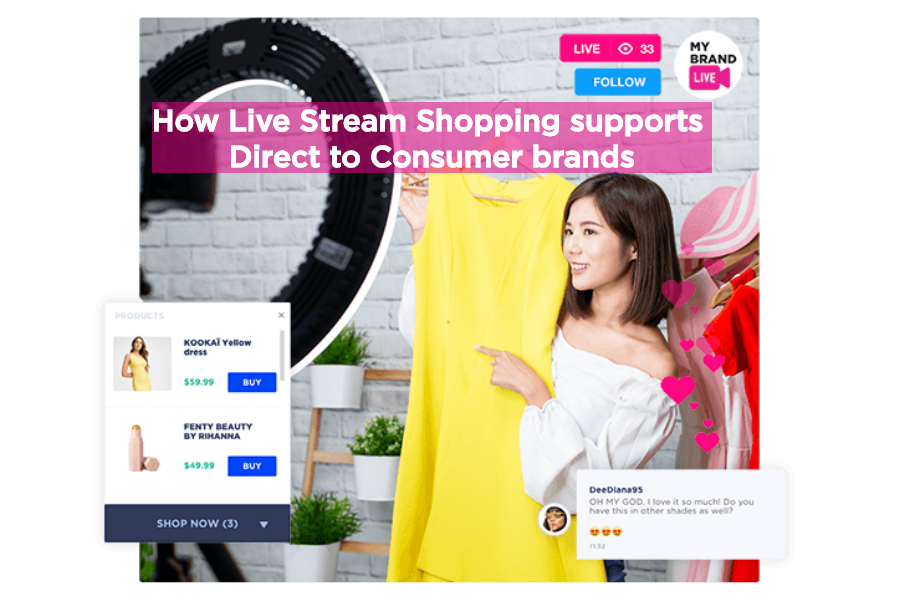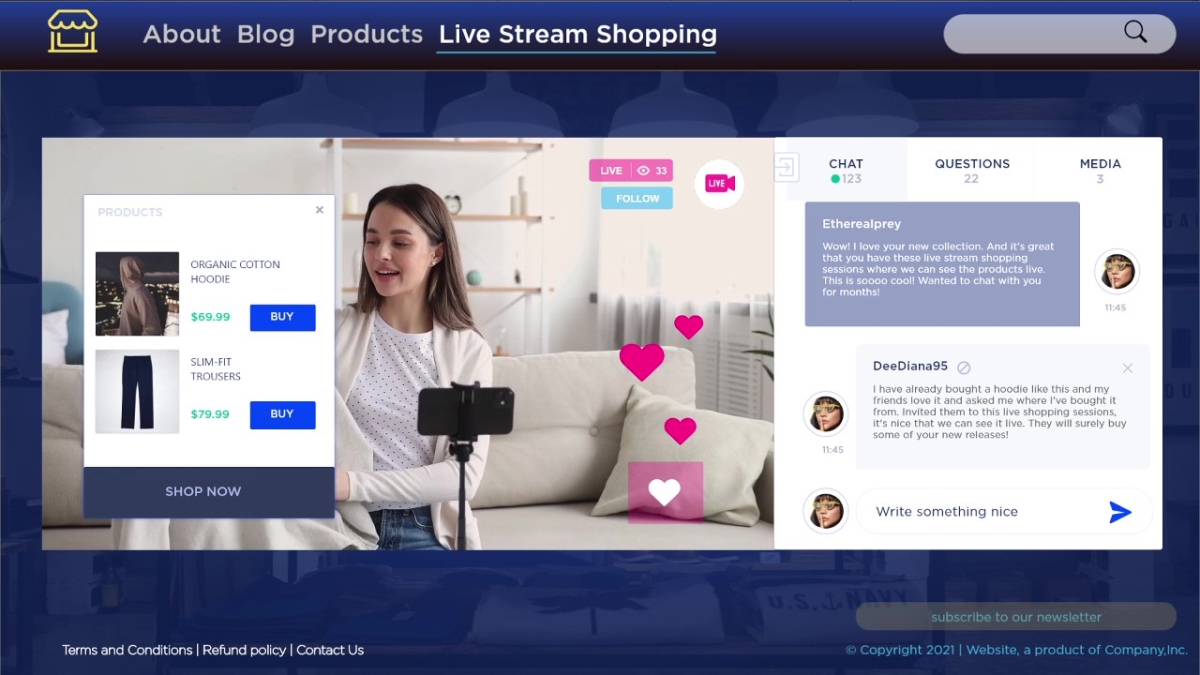
At the end of the fiscal year 2020, Nike reported that 35% of its income came from Direct to Consumer sales. Backed up by almost $12.5 billion consumers paid directly to the brand, executives at Nike stated that their plan is that by 2025, 50% of sales will be made through their direct to consumer channel.
Adidas, Nike’s historically main competitor, also plans to increase its Direct to Consumer sales up to 50% over the next 5 years.
Two of the world’s biggest brands, with combined sales of more than $55 billion in 2020, are betting big on a direct to consumer strategy. Why?
The benefits of having a direct to consumer channel

Photo by Andrea Piacquadio from Pexels
More manufacturing companies built D2C (direct to consumer) sales channels as it’s now easier to reach the final buyer. eCommerce changed the supply chain. Traditionally, it involved the material supplier, product manufacturer, wholesaler, distributor, and retailer. With a direct to consumer approach, brands can shorten the journey and eliminate the wholesaler and distributor, shortening the journey from manufacturing to consumer. There are multiple benefits of eliminating the middleman, yet not just benefits. For big brands, the aim is not to completely change the supply chain, but to increase the percentage of direct to consumer sales.
eCommerce allows new, smaller brands to enter the market and scale at speeds never seen before. By having a direct relationship with clients and total control over the brand communication, direct-to-consumer first companies are changing their sales culture. They now have the opportunity to iterate, launch new products and approach new markets and demographics. Let’s dive deeper into these changes:
Directly connected to the customer
The primary benefit of having a direct to consumer approach is that companies have a direct, uninterrupted channel of communicating directly to the customer. Following the classical supply chain, brands did not have direct access to their buyers. And most of the time, their buyers were not actually their clients. The buyer was actually the client of the final retailer, and the data (if any is collected) remained with the retailer.
For a brand, having a direct communication channel with the customer is crucial. This allows it not only to see how much customers are buying but also to understand why. To see what works and what doesn’t and to hear it straight from the source.
Access to customer data helps companies share new releases and increase spending with the brand. But there’s even more benefits to having a direct line to the customer. Let’s see which are these:
Increased margins
By eliminating the middle man, brands can increase their margins. There’s no other company collecting the margin so the benefit is split between the brand and the customer. Of course, there are other costs that need to be taken into consideration. Client acquisition now needs to be done by the brand itself. But with the right strategy, a direct to consumer approach and increased margins will mean, at the end of the day, more profit.
Controlled customer experience
Having direct communications with customers and direct input from them means that brands can now craft the customer experience to suit the buyers’ highest expectations. As the offer becomes wider and goods become commodities, the customer experience is the one that can make or break your business. By opting for a direct approach, it’s easier to understand what customers expect from you. Brands can use this knowledge and craft the products and experiences that make them stand out from the crowd.
Customer support was always important, but over the last years become critical. By selling direct to consumers, you allow the customer to contact the brand directly. This way complaints can be solved in a shorter time, increasing the overall customer satisfaction.
Simply put, a direct-to-consumer strategy gives you end-to-end control over the customer journey.
Full control on brand image and story
When customers buy your products from third parties, you do not have total control over how your brand is communicated. No matter how much you invest in your marketing, a part of the story is influenced by your partners. And once products hit the shelves, it’s hard to have the same level of control.
When it comes to the brand, things are a little more sensitive. With a direct to consumer approach, you are the one controlling the whole customer experience. You control how your brand is communicated and and how it interacts with existing and potential customers. This helps your reputation and awareness.
Cross-selling and up-selling
This approach gives you direct access to customers, but it also allows you to showcase different products in front of your audience. When working with wholesalers and distributors, they will always try to bring only the best-selling products into their portfolio. But what happens to your products? How will the buyers have access to them?
When they buy your products, people send you a message: they like your brand, they trust your products.
Having a direct to consumer approach will make it easier for them to have access to other products as well. It will allow you to use your direct communication channels to inform and showcase your work. Using the insights collected, you will be able to target the right customers with the right products. Thus you increase the purchase value for your customers.
Why customers love to buy directly from the brand?

Photo by Kampus Production from Pexels
When given the chance, 88% of consumers prefer to buy straight from the brand, as it’s shown in a survey conducted by BrandShop. One of the reasons for this is that customers feel safer when purchasing from the brand. For one thing – they know for sure the products are authentic. Another reason is the experience that a brand offers. The purchasing experience has its own role, sometimes even more important than the product itself. How you make people feel when they purchase is something that should not be neglected.
Brand affinity has a special role in the purchasing process. And so much more than in the past, customers are now looking primarily not at the price, but at the brand’s values and purpose. Nowadays, a purchase is more than just a transaction. It’s a relationship. When purchasing your products, customers vote for you with their money, time, and trust. And they do it only if your values are the same as theirs.
How to Build a Direct to Consumer strategy
In the first part of this article, we were discussing the supply chain, and how the direct to consumer approach shortened it. But imagine having such an approach 50 years ago. Sounds quite difficult, right? And it was. The internet and the possibilities to easily interact with people all over the world made this possible. If in the past, a direct to consumer approach allowed us to develop a local brand, nowadays we can develop strategies for the whole world. If you can sell and ship to a specific country, you can enter that market. This opens amazing opportunities.
But the ability to sell online comes with its (small) problems.
Having a direct to consumer approach that relies only on eCommerce comes with its own challenges. Not having a local presence on a specific market is not the end of the world, but it will deprive customers of an important step in their purchasing journey. They are not able to have a proper understanding of your product. They cannot touch it, see it or test it. And this is something that should not be neglected, as a Survey conducted in 2020 stated that more than 50% of internet shoppers are looking for better purchasing journeys.
For brands with a direct to consumer approach that relied solely on eCommerce, one way of fixing this is to allow customers to see, touch, and test products in showrooms. Located in high traffic areas, these showrooms allow people to mix the in-store and online journeys. They can try the products just like in a normal store but purchase them online. And they get delivered at home. This approach has multiple benefits, for both the consumer and the brand.
The consumer can get a better understanding of the product. Yes, it cannot be purchased from the showroom, but they get answers to all of their questions.
The brand can open multiple showrooms without having to solve the pains of actually having a brick-and-mortar store. Not selling products means they don’t need to actually add the location to the supply chain or process payments in the location. It’s easier to have a showroom than it is to operate an actual store. But it too has its limitations.
Are showrooms the perfect solution?
The answer is definitely no. Over the years, we’ve learned that the perfect solution does not exist. And this applies to showrooms as well, as they have some of the restraints of actual stores.
A good location will force you to dig deep into your pockets. Indeed, a showroom will need a smaller space as you don’t need to actually hold large stocks.
Physical presence is needed. If you are a brand from Albany, Texas, it’s going to be difficult to open a showroom in Paris, France. Not impossible, of course. But the hustle is real and for small brands, it is impossible to open a showroom for each new market they want to approach.
But there’s a third option – one in the middle:
Live Stream Shopping – Adding a third layer to commerce

Direct-to-consumer brands operate on both digital and brick&mortar stores. But they are always looking for ways to allow customers to better experience the products. This is why some direct-to-consumer brands, like Allbirds, are online-first but maintain some physical stores as well.
Other brands, like Warby Parker, ship multiple products in one order. This allows you to pick at home the product you really want to pay for and return the others.
Other brands, like Glossier, went for a mix of digital, brick and mortar, and pop-up stores.
While digital remains the main selling channel for these brands, a new one emerges. There’s a third option, one that helps customers better experience the products.
This is called live stream shopping and it’s disruptive. The live video commerce experience allows brands to go live in front of their audiences, showcase their products, engage the viewers, and sell. It takes the best from both in-store and digital shopping experiences.
While still relying on your eCommerce infrastructure, you can have a digital showroom where your team can interact live with customers. Products can be showcased like in the real world. No more static pictures and pre-recorded videos. Shop assistants can interact with people from all over the world. Viewers can ask questions and get their answers on the spot, allowing them to take action straight from the live experience.
Unlike physical showrooms and brick-and-mortar stores, live stream shopping sessions are available for anyone. Unlike traditional eCommerce, this creates an interactive, two-way communication channel.
It’s a new commerce dimension. And it’s here to stay.
Final thoughts
Live stream shopping combines in-store and online shopping by creating a new shopping journey for your customers. For direct-to-consumer brands, it provides a new way of staying in touch with their community without having an actual physical presence.
By onboarding this new experiential trend, brands can interact with their customers, live! They can showcase their products, engage viewers, and sell. They can create new experiences, crafted for what their consumers expect from them.





